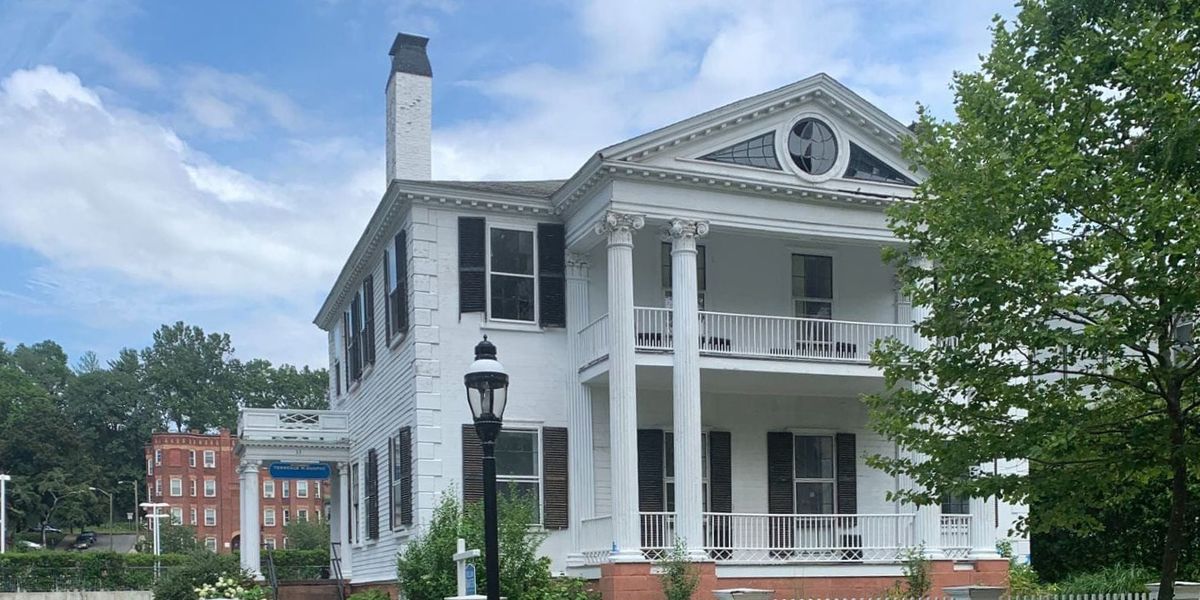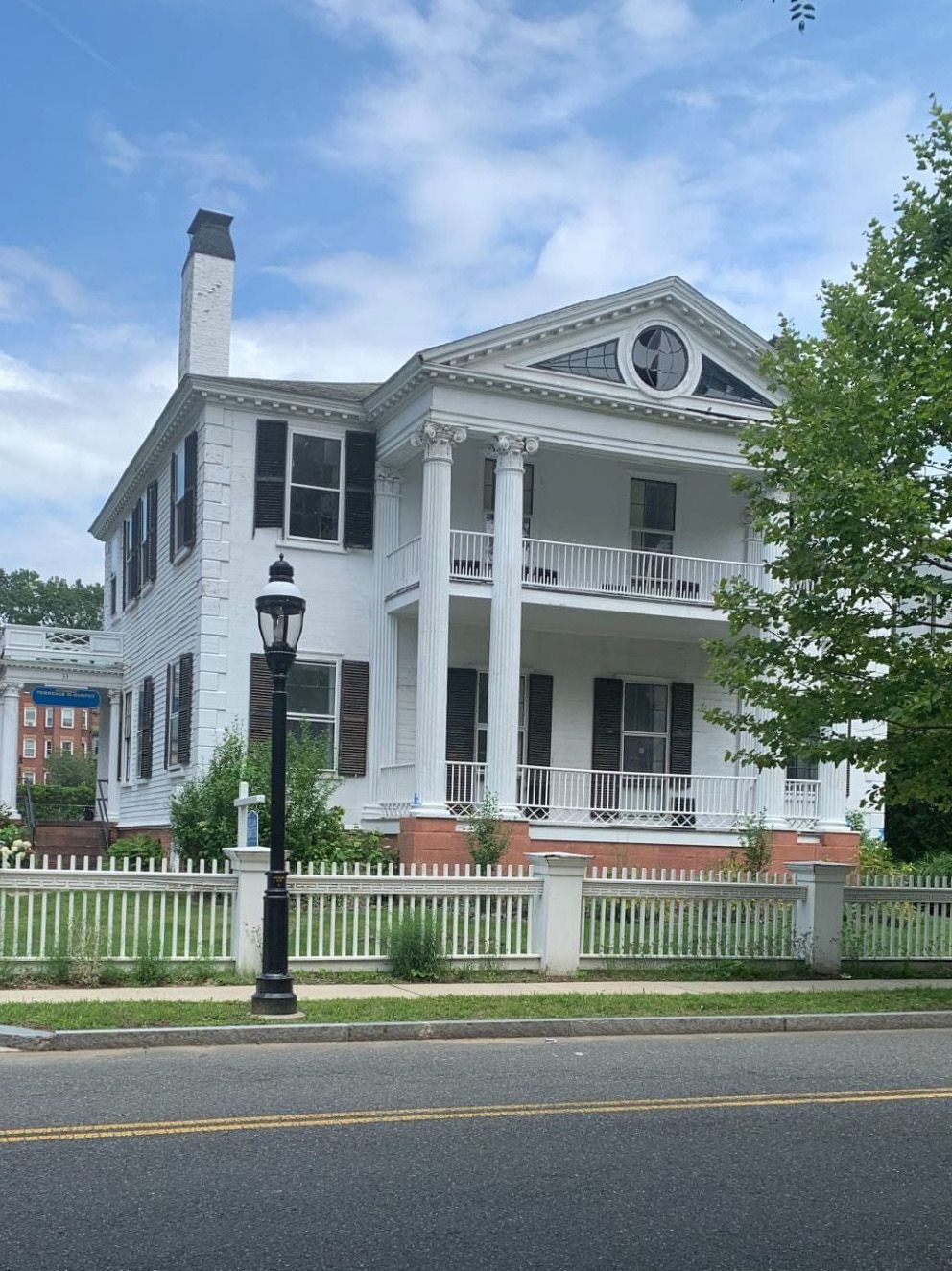Buying the Trask House: A Chance to Confront Our Past
Managing Design Editor Anna Smith ’22 sheds light on the slaveholding past of Israel E. Trask, one of the first trustees of the college, and argues that the college should purchase the Trask house and turn it into the Mary Sly Center for Restorative Justice.


Israel E. Trask was one of the first trustees of Amherst College. He donated a total of $710 to the Charity Fund to establish the college, later making an additional donation of $300 upon his death in 1835. He also helped to secure the college’s charter in the face of challenges from Williams College. To do so, he guaranteed the pledges of women and minors to the fund, encouraged the purchase of the Parsons land — on which people were enslaved — where the Octagon now sits and helped to establish Jonas King as the first professor of oriental languages.
However, the wealth and the influence that allowed Trask to contribute to the college was a result of his status as an enslaver. Trask enslaved hundreds of people on plantations in Mississippi and Louisiana and even brought at least five enslaved people to his home in Massachusetts. The Trask house in Springfield is one of the few standing structures in Massachusetts known to have housed enslaved people, and it is currently for sale.
Amherst College should buy it.
As the college celebrates its bicentennial, it is confronting its past through the Racial History of Amherst Project, of which I am a part, and through collaboration with people like Nicka Smith, a descendant of people enslaved by Trask. But this part of the history that our work centers on has received little attention. Only a handful of people I have encountered even know Trask’s name, let alone those of the people he enslaved. Mary Sly, for example, was brought to Springfield by Trask but later emancipated herself and assisted others in doing the same through the Underground Railroad.
Why hasn’t Amherst been as attentive to its historical past as other universities studying slavery have? The answer likely lies in that there is no physical evidence of slavery on our campus: there is no Calhoun College to rename, as at Yale University, and we never used the family crest of an enslaver as our own, as at Harvard Law School. But we do have the words of the Black Student Union’s #ReclaimAmherst campaign, which reasserts that “Black people are the condition of possibility for the existence of Amherst College.”
Amherst College should purchase the Trask house to cement its commitment to anti-racism and transform the space into the Mary Sly Center for Restorative Justice, a museum and community engagement center. As Mike Kelly, head of the Amherst College Archives and Special Collections, said in our email exchange, “Donations, service on the board of trustees and support for the charter all feel so abstract; that house is a perfect manifestation of wealth from slavery on public display in Massachusetts.”
Here, Amherst students and residents of the Connecticut River Valley alike could learn about the legacy of enslavement in the area and engage with efforts toward reparations and restorative justice. To do so would make Amherst College one of the only institutions in Western Massachusetts to interpret enslavement in a space in which it actually took place — Royall House and Slave Quarters in Medford and the Porter-Phelps-Huntington Museum in Hadley are the only two sites already established.
The center would not be a space to learn about Trask and the grand architecture of the home — as is so common in many historic house museums — but to learn about people like Sly, who was brought to a free state as an enslaved woman, who slept in the now-absent wings on the sides of the house and who was able to escape.
L. Stanton Williams 1941 Professor of American Studies and English Karen Sánchez-Eppler told me, “[i]ts location in Springfield could make its acquisition and donation for this use a true act of reparation — something Amherst can give to the Black community in this region. Moreover, standing right next to the federal courthouse, its placement expresses the links between the history of enslavement and the present [issue] of incarceration.”
Naming the space after Sly rather than any of the names that were once on the deed — the property is currently listed for sale under the name of the “Alexander House” — is itself an act of restorative justice. It is making her name known as one of the many Black people which made Amherst College possible.
There is certainly some credence to the idea that having a restorative justice center in Springfield would separate it from the Amherst community, making it feel like a hollow effort — what is out of sight is often out of mind — but Amherst students have been able to work with the Folger Shakespeare Library in Washington, D.C. even in the middle of a pandemic, and have previously enjoyed field trips to local history sites during non-pandemic times. Even collaboration with Springfield has precedent: students collaborated with Springfield for Black Arts Festivals in the late 1960s and early 1970s. Moreover, the central location of the house makes public transportation a possibility, even if it is a time-consuming one.
And while the college is certainly capable of moving buildings, to move the Trask house to Amherst would be to divorce it from the community in which Sly lived and built her legacy, and from the Black community that lives there today. The college should instead work with local organizations such as the Pan African Historical Museum USA, which runs a walking tour of the Underground Railroad in Springfield, to ensure that the house remains in this vital location while still meeting the needs of the community. The local Black community should have an active and ongoing role in shaping programming at the center.
The simple purchase of this property is not enough, of course. The college must continue working toward its commitment to being anti-racist, and it must consider reparations. But establishing the Sly Center would be a major step forward in not only acknowledging the ties between the college and slavery but also actually doing something to rectify those bonds.


Comments ()